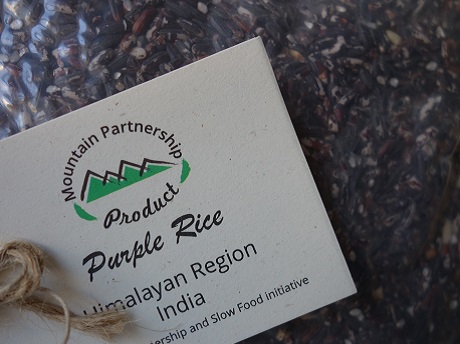 | Purple RiceRi Bhoi Wastershed, Meghalaya, India |
Purple rice is an indigenous crop cultivated by small-scale Indian Himalayan farmers as a ceremonial food. Traditionally called “Forbidden Rice”, legend tells us that this ancient grain was once eaten exclusively by the Emperors of China. Local communities believe that planting purple rice around the house will protect their households. Characterized by its unique purple colour, this super food contains antioxidants and high levels of vitamins, minerals and fibres.
Production
Purple rice is cultivated by tribal families through traditional farming systems and permaculture, without the use of chemical fertilizers. Its yield of production is lower than other rice varieties, threatening its survival.
Territory
This purple rice is farmed in the Indian Himalayas in the Ri Bhoi watershed, Meghalaya State at 1 200 – 1 800 metres above sea level.
Consumption
Easy to cook, tasty and colourful, purple rice can also be used to make sweet puddings as it gets creamy when overcooked and combines well with dairy milk and coconut milk or cream.
Further information